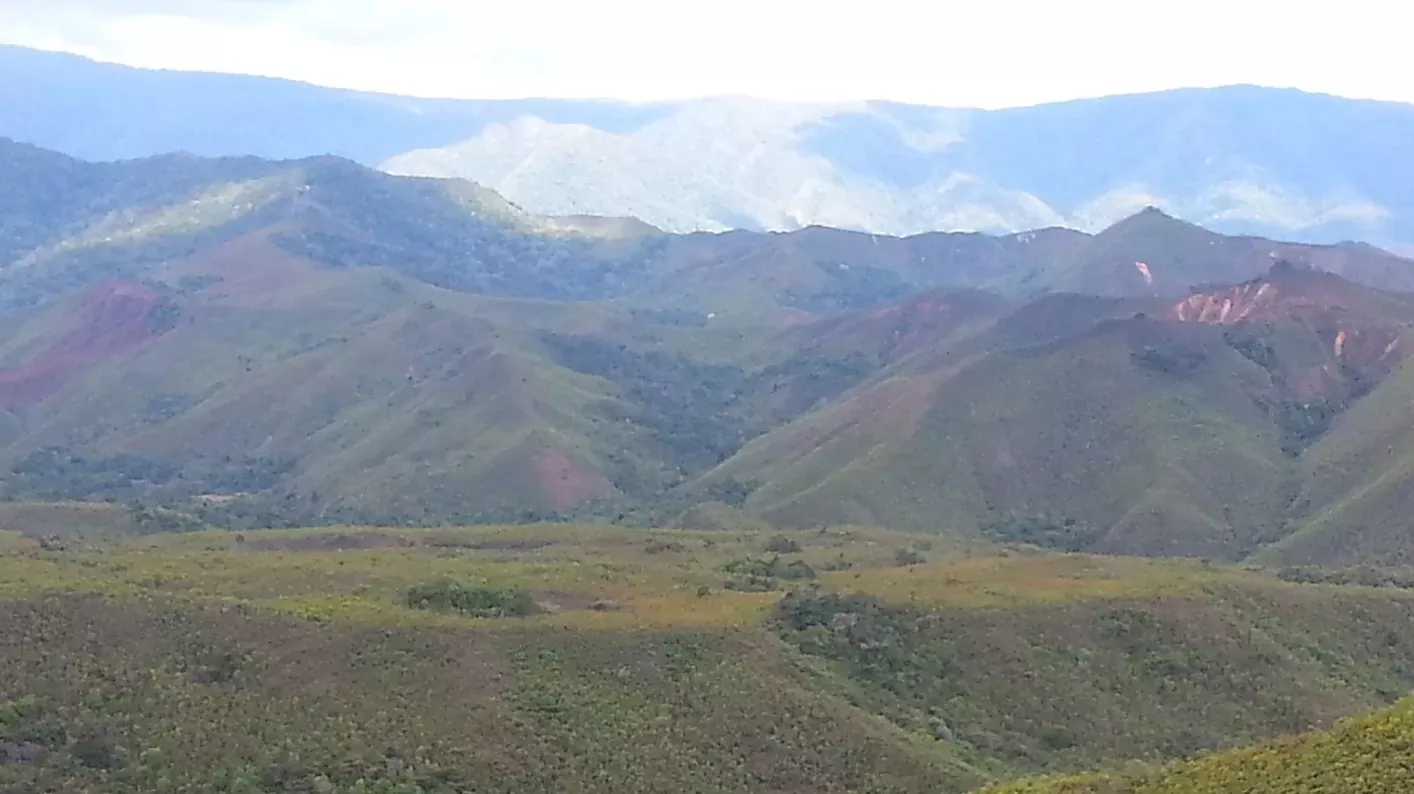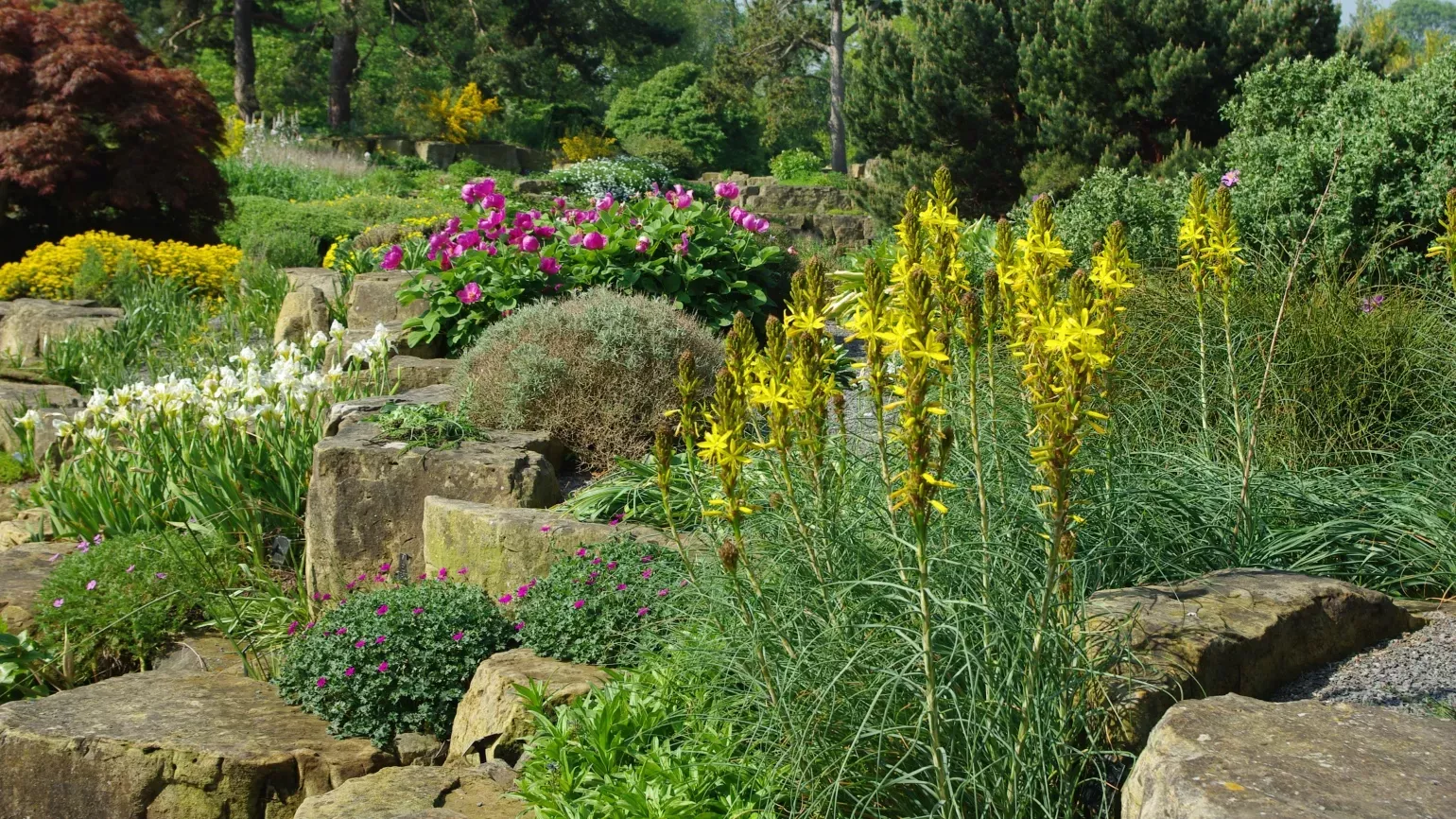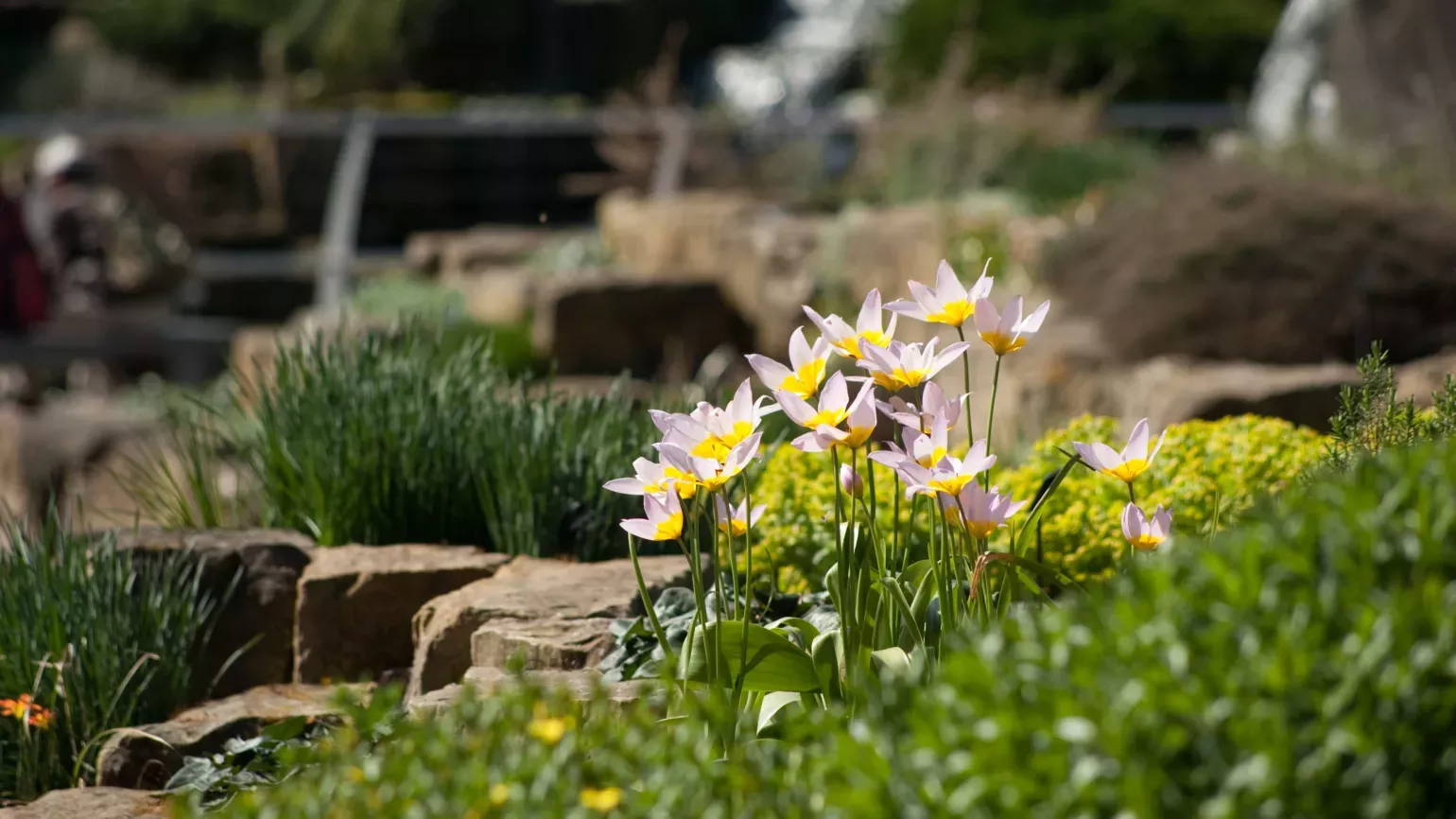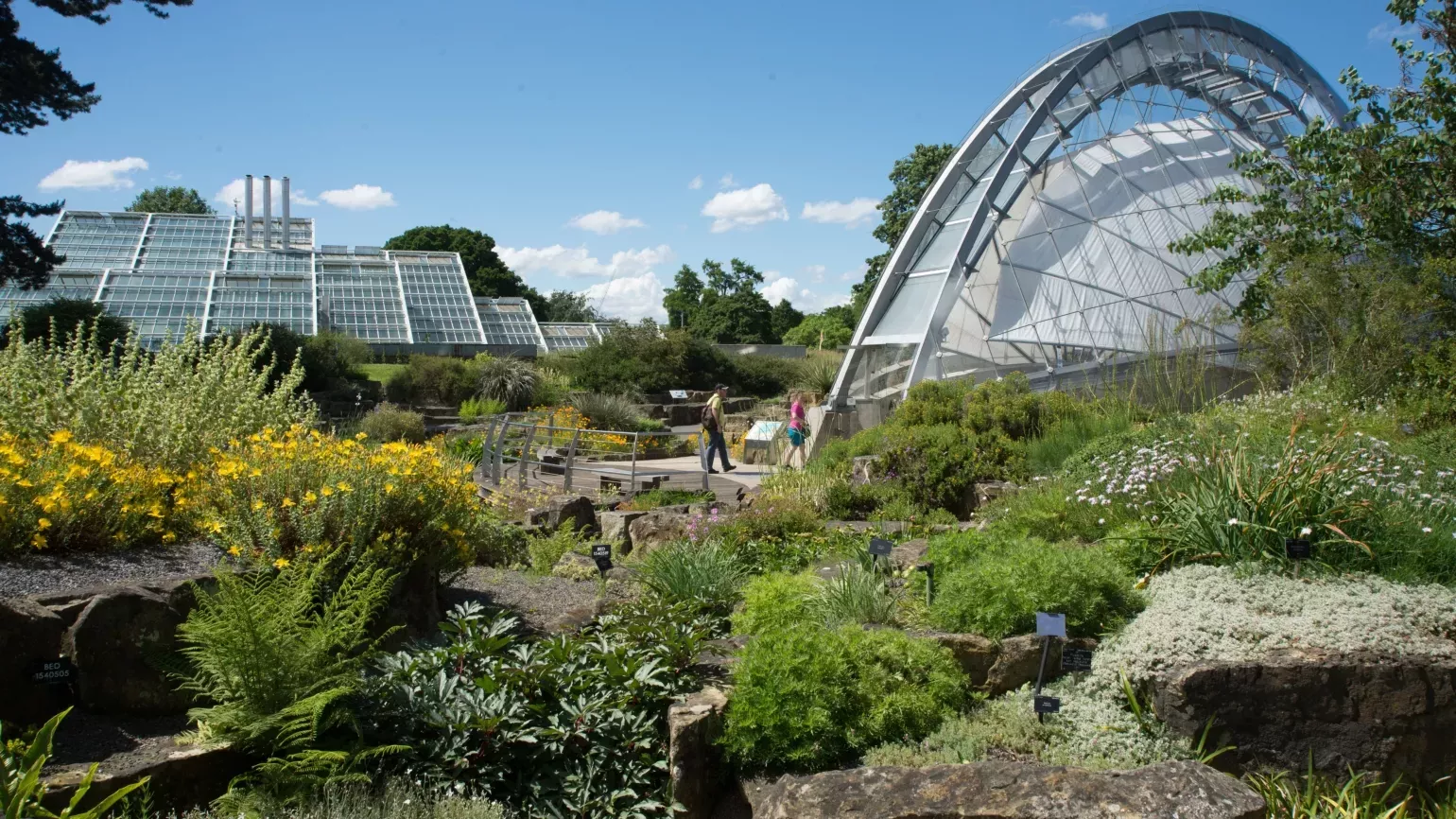Rock Garden
A dramatic valley carved through the landscape with wild-collected plants from six mountainous regions of the world.

Framed by rising sandstone peaks and cascading waterfalls, the Rock Garden mimics life in the world’s mountainous regions.
Originally constructed in 1882, the Rock Garden is over an acre in size making it one of the oldest and largest in the world. It has undergone major changes and developments in its lifetime, most recently the eye-catching waterfalls unveiled in 1994 and the Alpine House landscape in 2007.
The Rock Garden is a vital resource for our research. Over 70% of plants displayed here are grown from wild-collected seed, meaning it is our largest outdoor area dedicated to horticulture collected by our scientists.
The display is naturalistic, using changes in levels and perspectives to transport the visitor to a rugged and wild alpine landscape. The planting combinations are designed and developed to evoke the communities seen in nature, including plants not considered hardy in the UK.
Flora is displayed from six mountainous regions of the world, with each region allocated its own area:
- The European Alps and Pyrenees
- The Central Asian steppe and Himalayan mountain streams and meadows
- North American high alpine, prairies and bogs
- Windswept Patagonia
- Mediterranean scrub and South African bergs and kloofs
- The southern Alps of Victoria, Australia and the peaks of New Zealand
Visiting the Rock Garden
We may occasionally need to close attractions for maintenance or visitor safety: check for planned closures and visitor notices before you visit.
Discover more of Kew
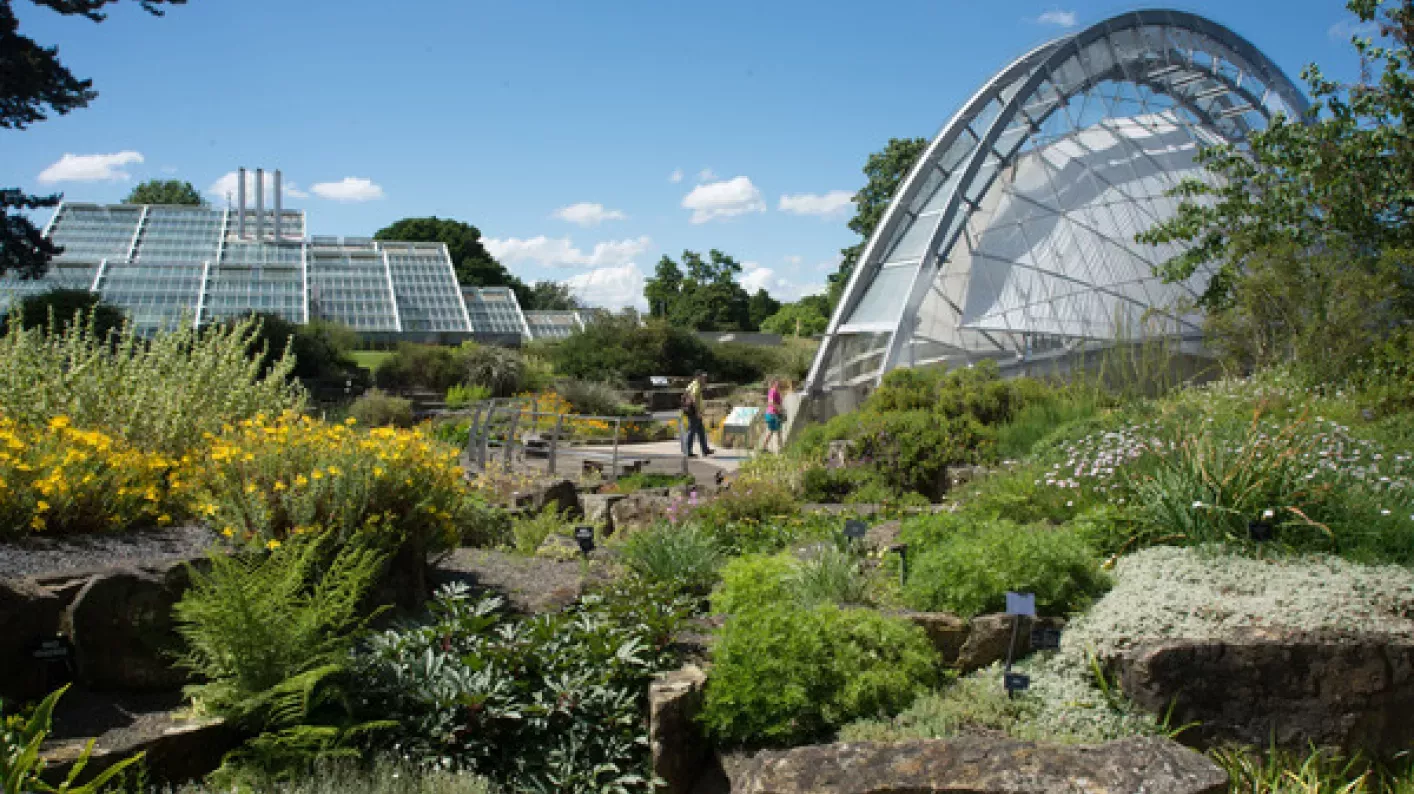
Davies Alpine House
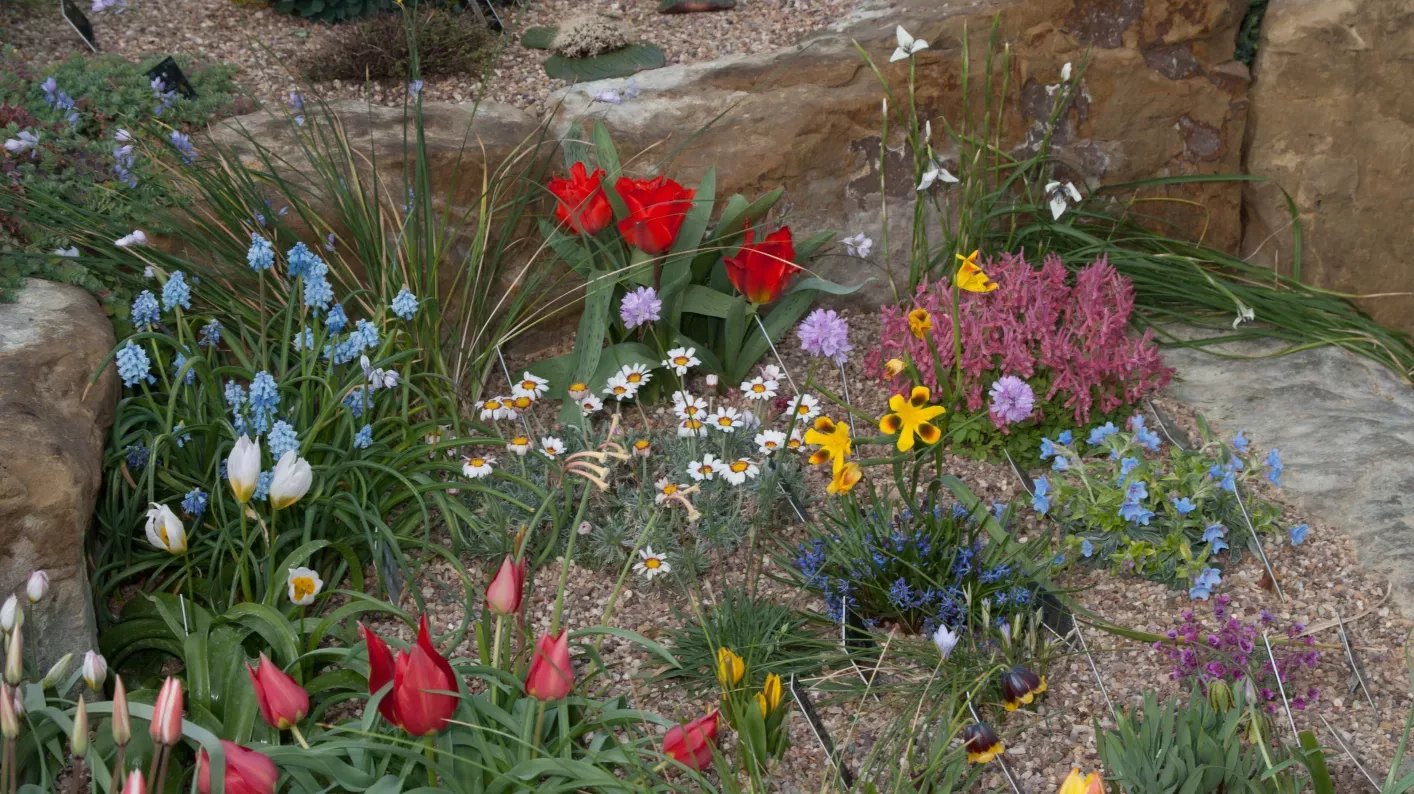
Searching for rare plants in the Julian Alps of Slovenia
